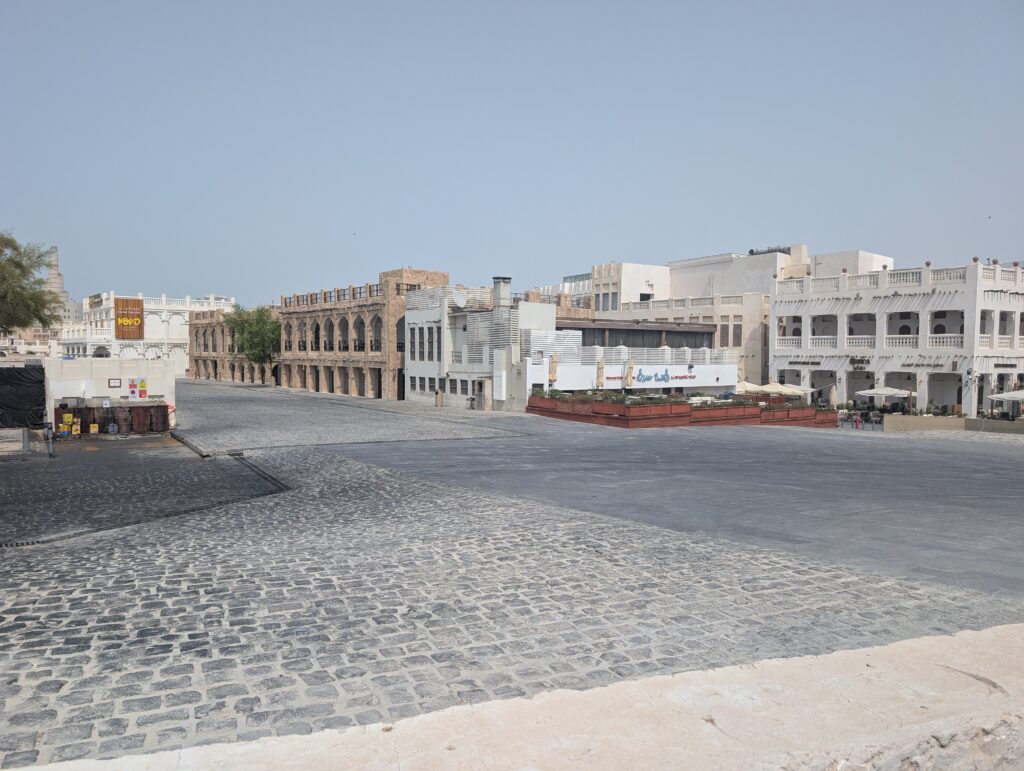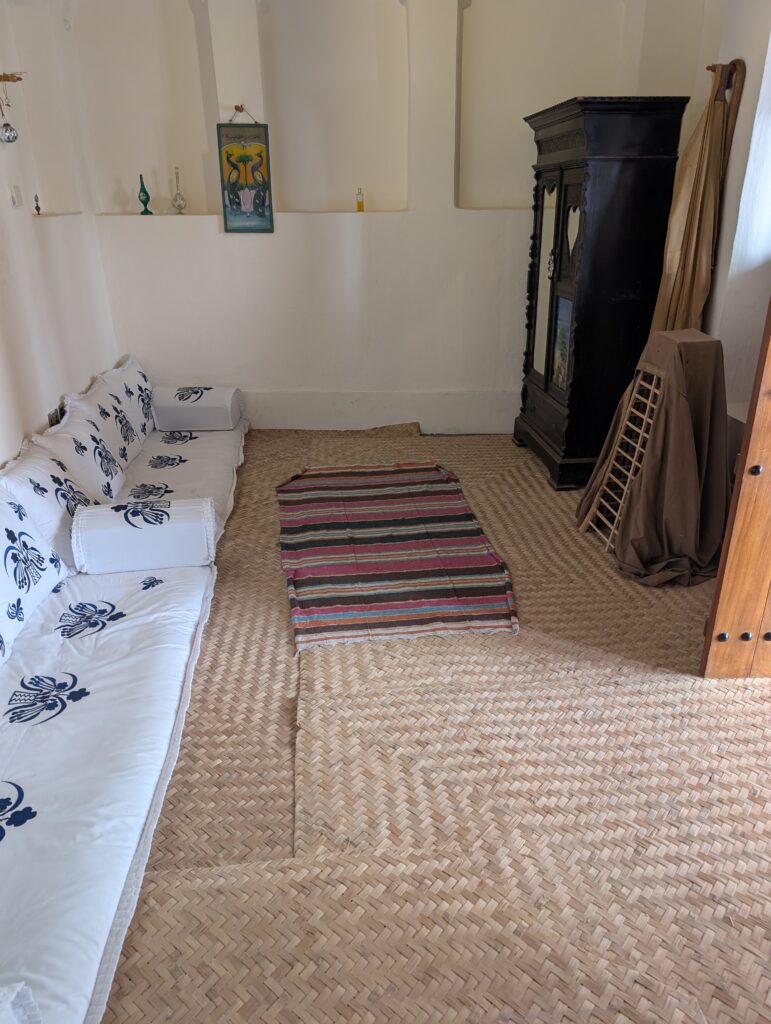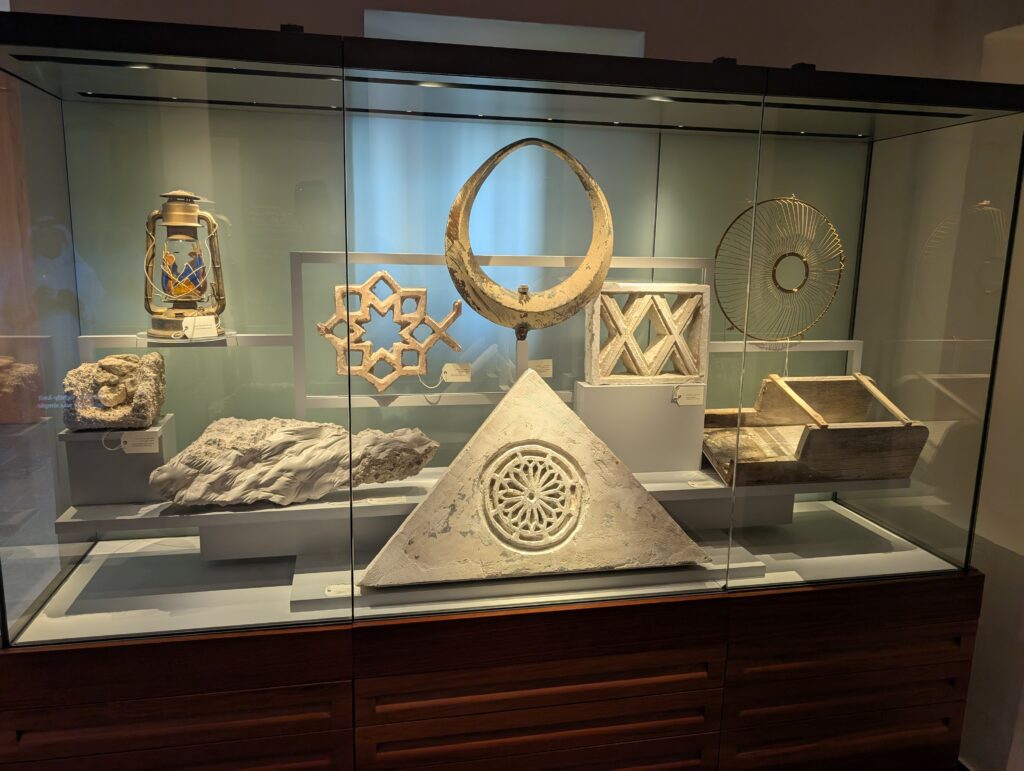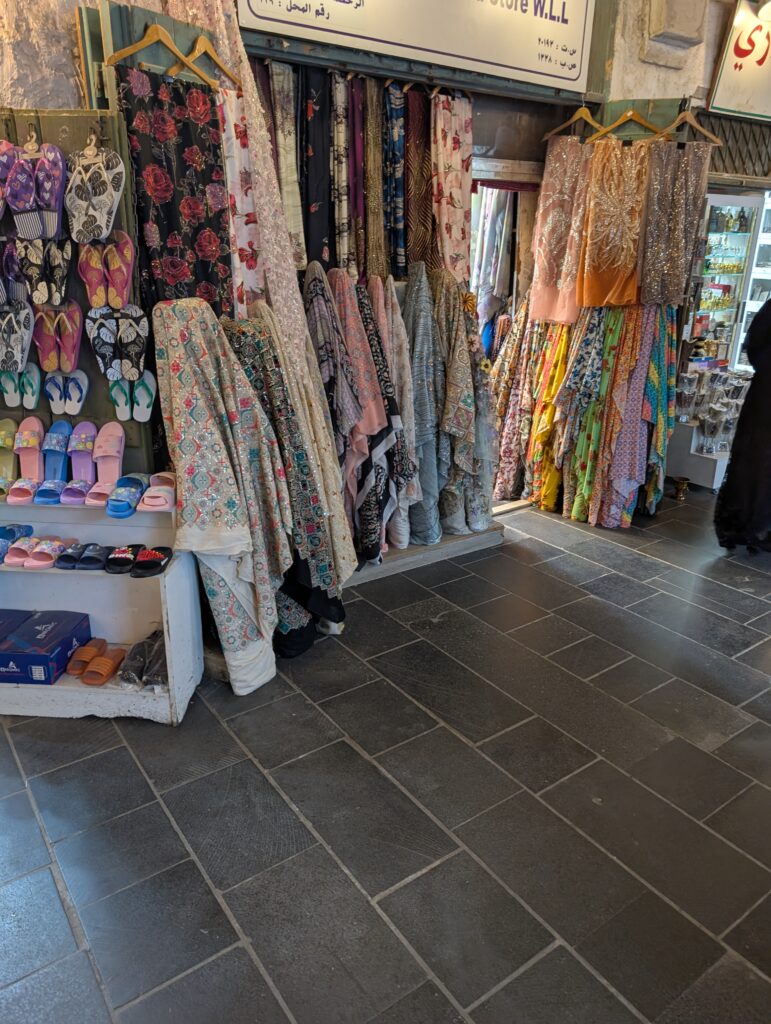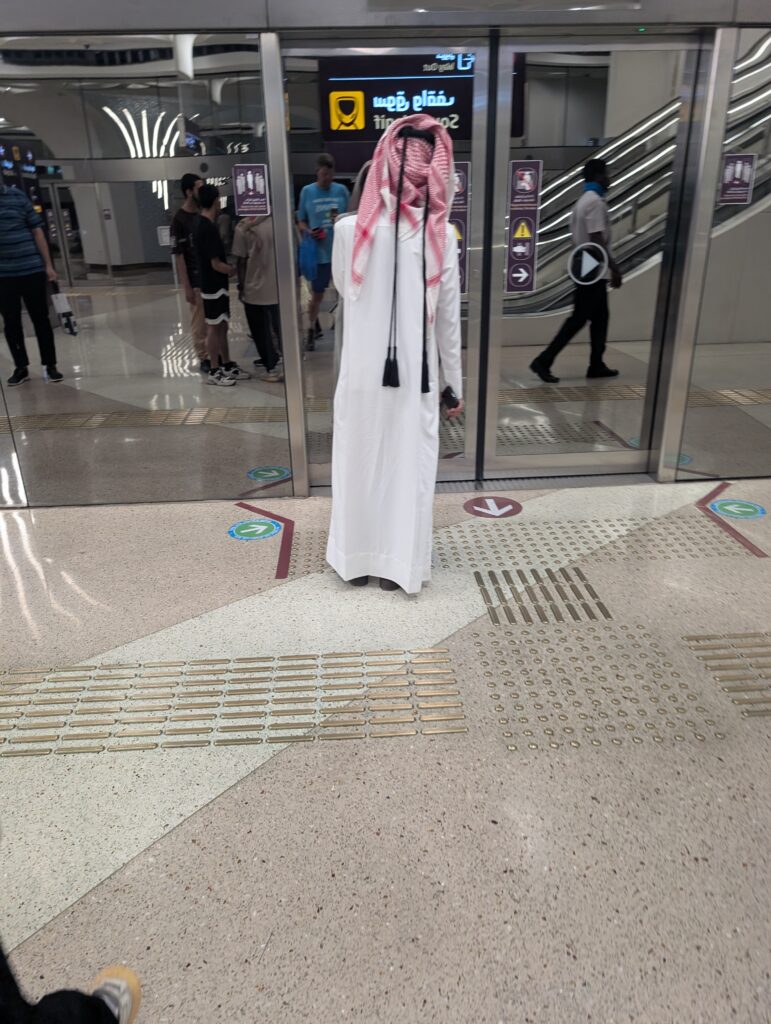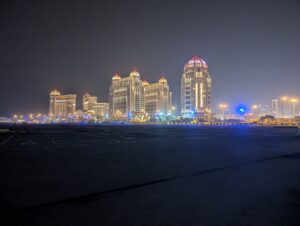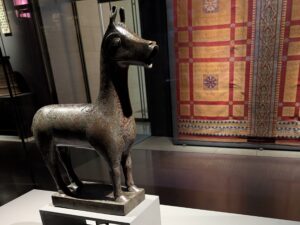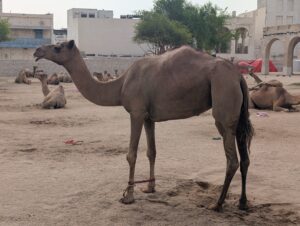Doha
Seeking a World Stage
It seems silly to fly from Bahrain to Qatar. The countries are separated by a waterway only 20-25 miles wide. When I was in Bahrain there was no better alternative. A causeway has been planned, but that is still years away. There were also rumors of a ferry route that as of this writing have yet to materialize. It is possible to drive to Qatar from Bahrain, but that requires a six hour drive and an extra visa since the route passes through a part of Saudi Arabia. The only good option was to take the short hop across, even though the transport to the airport and trip through security each individually took more time than the flight. My late morning flight arrived at Doha midday, and I caught the hourly Hyatt shuttle to my hotel.
I often stay at hostels for the social interaction.Surprisingly, I did not lose out on this aspect of my stay at the Hyatt Regency Oryx in Doha. Like Dubai, Qatar has an excess of money and a shortage of labor. Thus, nearly everyone you come in contact with as a tourist is from somewhere else. The desk clerks at my Hyatt had all been selected for their congeniality, and seemed genuinely happy to make small talk and tell me about their homes and backgrounds when they were not busy helping customers. I met nice kids there from Calcutta, Mumbai, and several other places in India.
During my several days in Qatar, I only met one Qatari. I visited with people from Ghana, Sudan, Pakistan, Algeria, the Philippines, and Iran, in addition to folks from all over India. This was an especially intriguing aspect of this leg of my journey. My Sudanese ticket agent at the National Museum made quite a pitch for me to visit Sudan. I suspect Sudan might be a safer place to visit once there is not a civil war going on there. It may be the case that the fighting is isolated. Certainly, it merits more research. Part of that research happens by talking to people from that country. People are so much a part of what makes the world such an interesting place.
After visiting with my desk clerk friends and checking into the Hyatt, I set out to begin my exploration of Doha. My young friends gave me some recommendations. I decided to head out to the night beach. Most beaches in Qatar are either privately owned or government regulated in a way that generates an admission. Many of them have odd hours and cannot even be visited for a fee during off peak times. The night beach I visited was one of the few free beaches in Doha. I took the clean, modern, and convenient Doha metro to a spot within walking distance of the free beach, then hiked through a shopping center entirely comprised of to-go and delivery restaurants. The beach itself was not all that exciting and the water was predictably quite warm, but by the time I arrived there, night was falling. The spot was worth visiting if for no other reason than to enjoy the nice view of Doha’s hazy, lit up skyline.
(Continued)

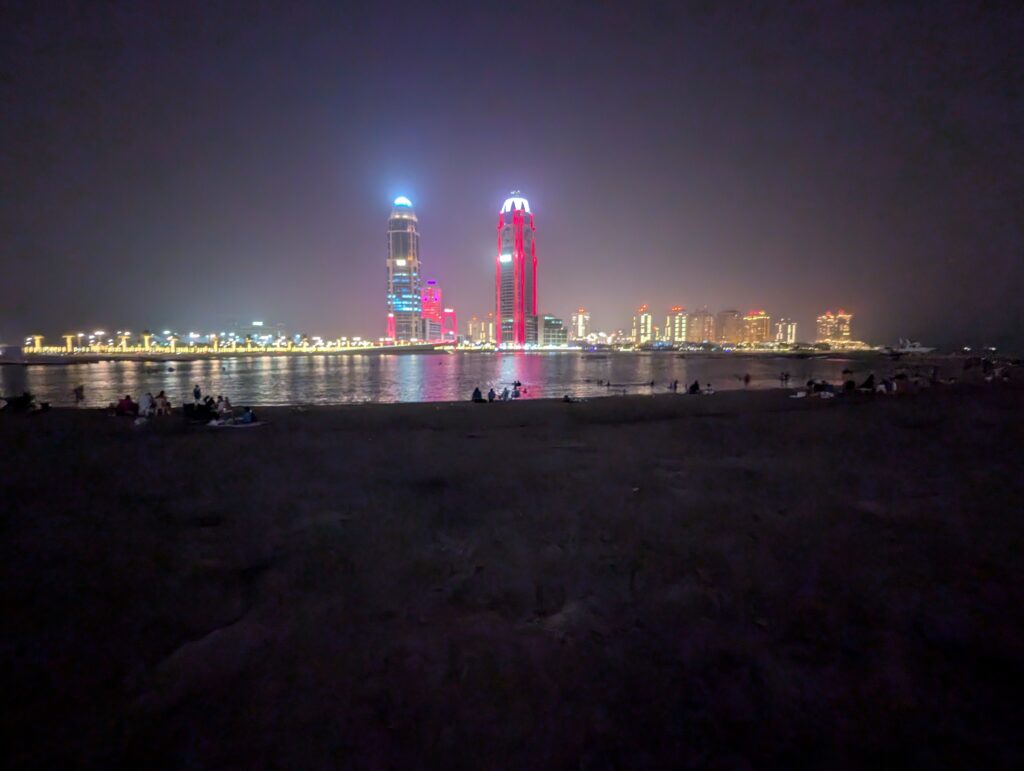
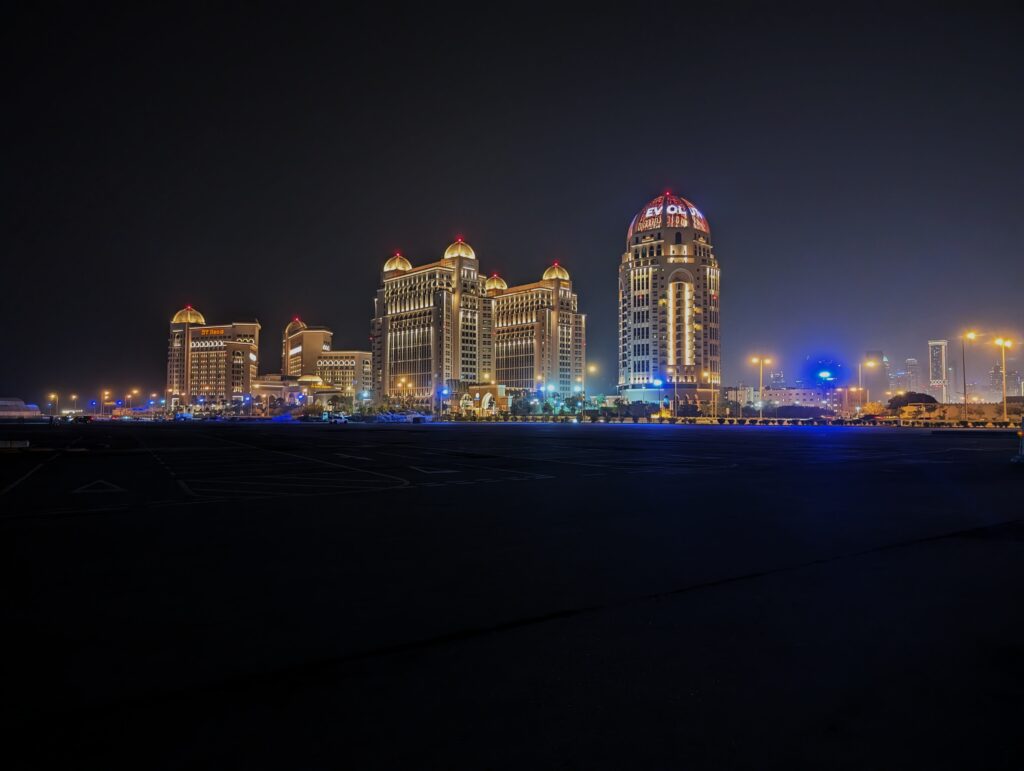

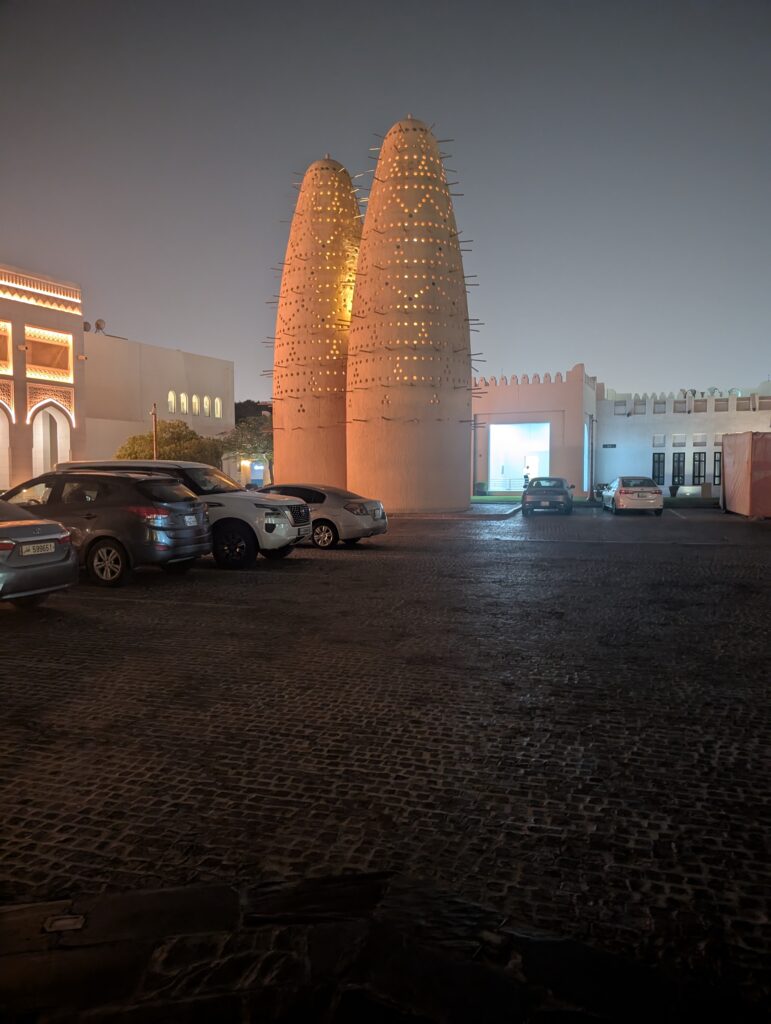
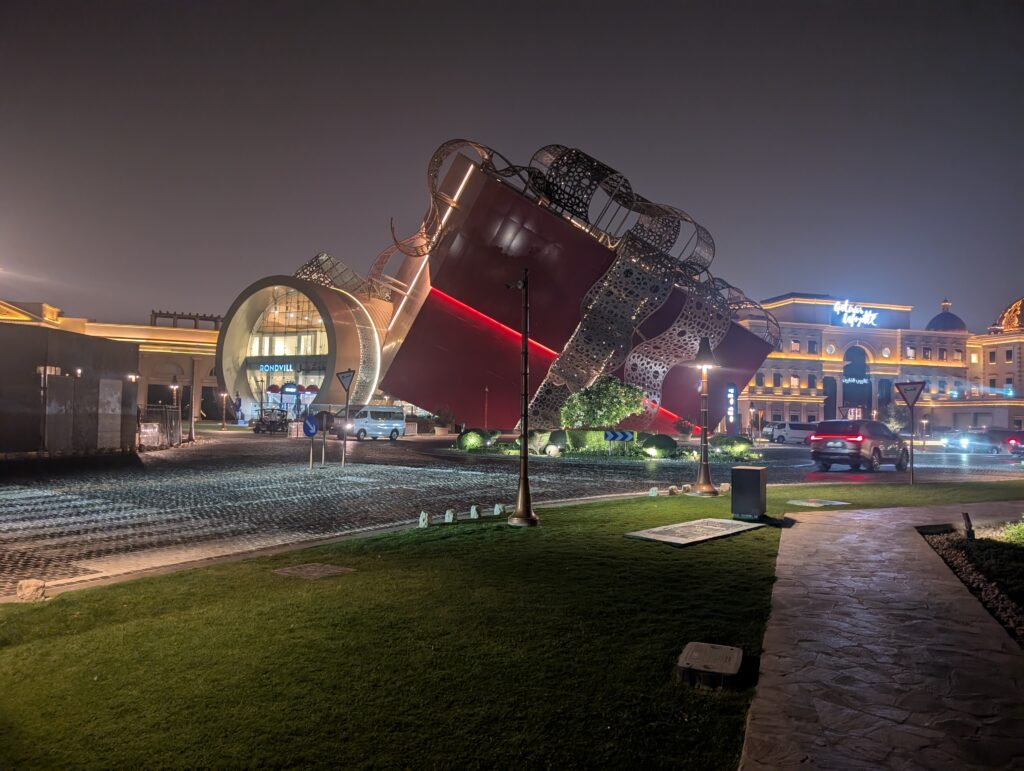
I was very hungry after my dip in the Gulf, but I was also feeling quite frugal and a bit self-conscious about my attire. None of the places in the shopping center I had passed through seemed to serve walk-ups. Most of Doha’s restaurants – at least in this part of town – were aimed at higher class clientele. I eventually found a highly rated, inexpensive Yemeni “restaurant” on Google Maps. It turned out to be a nothing more than a food truck! The heat was oppressive even at this hour of the night. I really wanted to sit in an air conditioned space to await and eat my food. It just was not in the cards. I sat outside in front of a fan, and sweated out the wait. The food was good and inexpensive, but the wait was certainly not comfortable.
I walked down the shoreline and along the outside of a mall that was closed as I made my way back to the metro. The mall and shopping center were gaudily decorated with modern consumer-targeted architecture. A lighted gift box was incorporated in the building to encourage customers to purchase expensive presents. Sweat poured off of me as I passed a shore front cultural museum as well. It was closed as I knew it would be at this hour. I finally reached the metro station and began to cool down. I grabbed a few snacks and drinks for the next day as I walked the last few hundred meters from the metro back to my motel.
The national museum was my first stop the next morning. I learned there that I could buy a pass which would also gain me entry to the Sports Museum and the Museum of Islamic Art in a “three for the price of two” deal. Museums seemed like my best bet for activities on scorching August days in Qatar, so I let my Sudanese ticket clerk up sell me on the package.
About half of the National Museum of Qatar was closed for renovation. This was a cost of visiting in the off season. What was open was worth the visit. The structure itself is a very strange looking piece of modern art inspired by the desert rose crystal. Seeing an example of one of these crystals, the similarity was apparent. I found the part of the museum that had been Sheikh Abdullah bin Jassim al Thani’s palace far more aesthetically pleasing.
Al Thani was born in the late 19th century and served as Emir of Qatar throughout much of the early 20th. When the Ottoman Empire began to back away from control of Qatar during the First World War, Al Thani asserted power. He ran the Ottomans out of Doha in 1915, and was eventually recognized by the British as the Emir. He signed a treaty with the British agreeing not to make political agreements with foreign powers without British approval in return for the British protecting Qatar from all sea-borne threats. Thus, Qatar became a British protectorate and remained so until British devolution of all of their colonial possessions after World War II. Al Thani was also fortunate enough to oversee discovery of oil in the region, and to benefit from the associated economic boom. The Al Thani palace section of the museum is not air conditioned, otherwise I might have spent a bit more time there. As it was, I enjoyed the building and the view from its roof.
The National Museum of Qatar – at least the portion that was open – had nice displays of jewelry, clothing, and traditional weaponry. The strongest section that was open covered the evolution of the Qatari economy. Prior to the discovery of oil, Qatar, like Bahrain, had been best known for its pearling industry. I had seen a bit more on the history of pearling in Bahrain than was on display at this museum, but the Qatari museum devoted a lot more space to the discovery of oil, and its transformation of the Qatari economy as well as the country’s future and current position in the world. Qatar embraces its status as an oil emirate, whereas Bahrain seems to be trying to move to a slightly more diverse economy with greater emphasis on banking. Certainly, the Al Thanis have done everything they can to highlight Qatari wealth on the world stage, as will be seen in more detail at the sports museum.
(Continued)
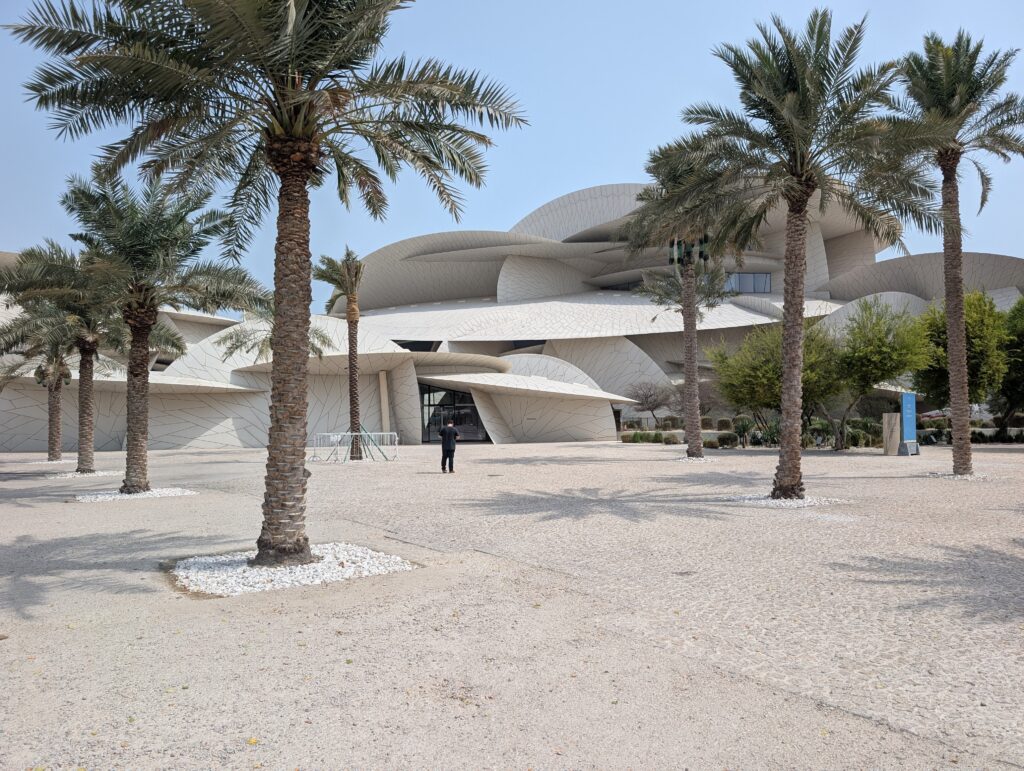
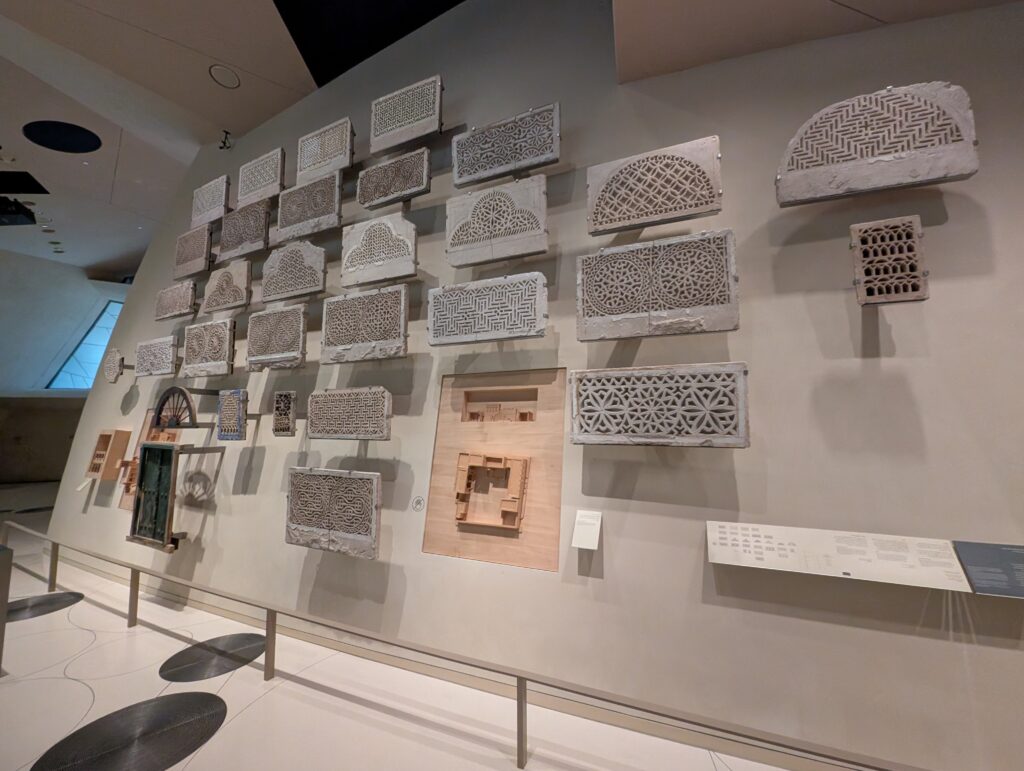
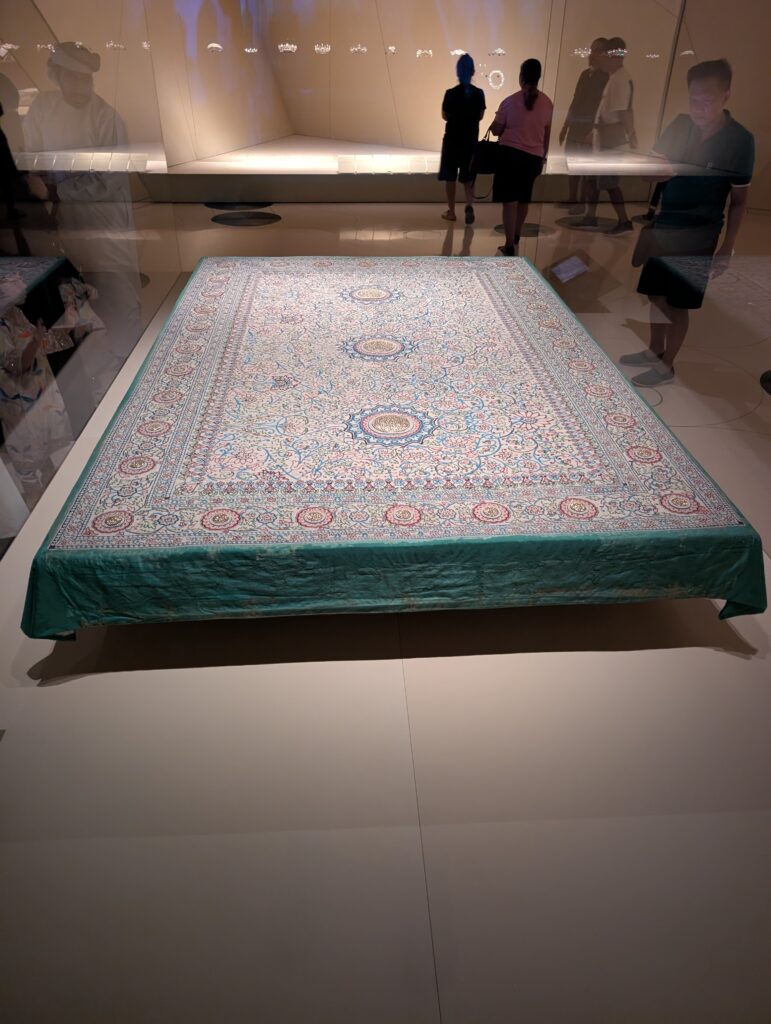
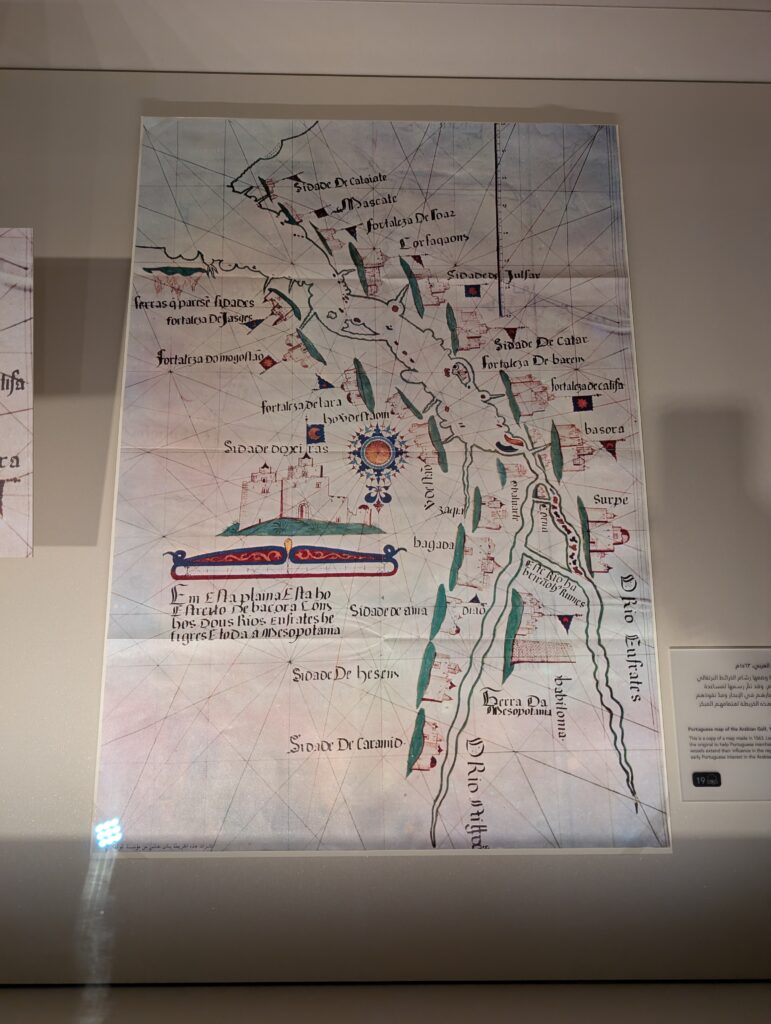


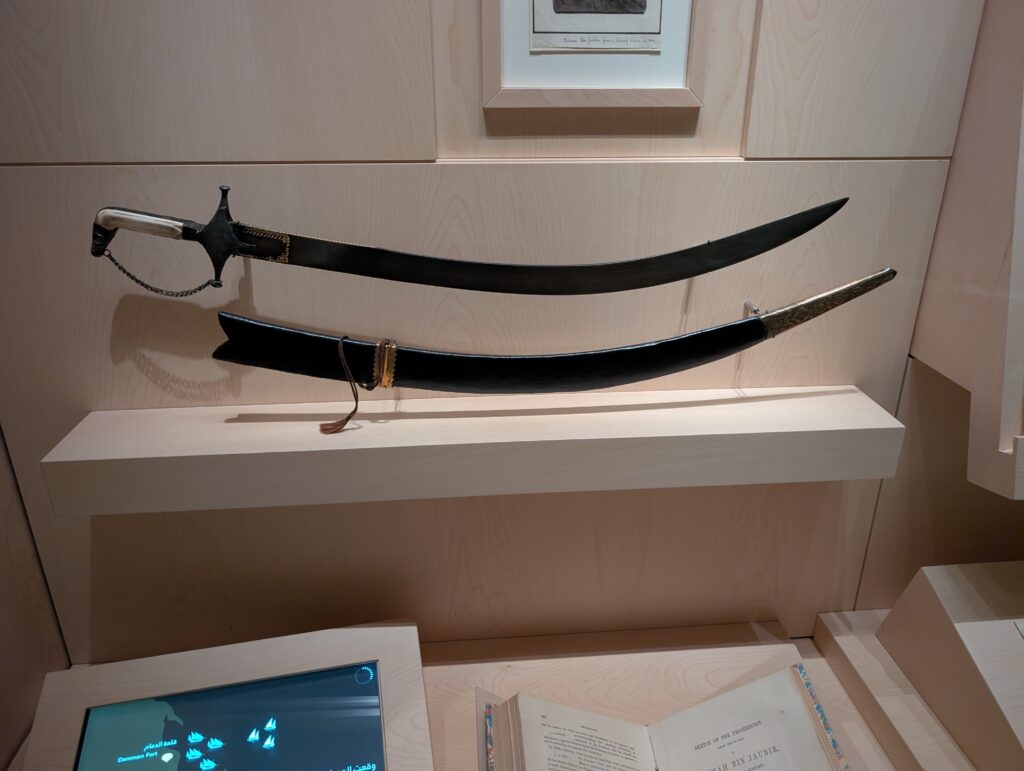

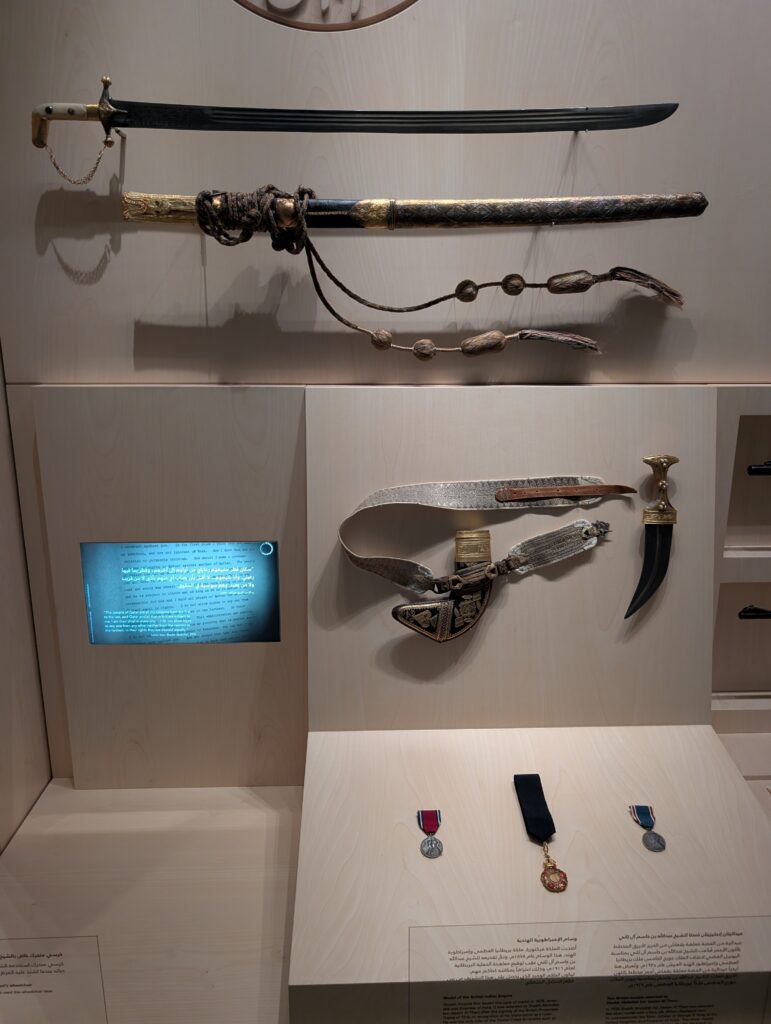
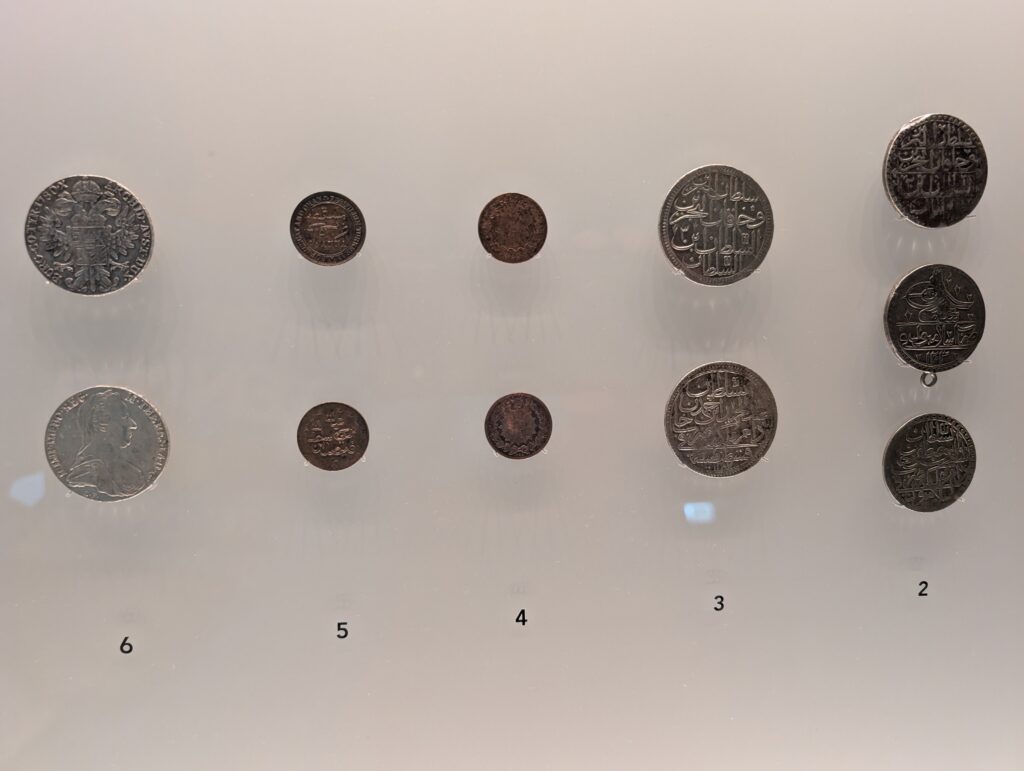

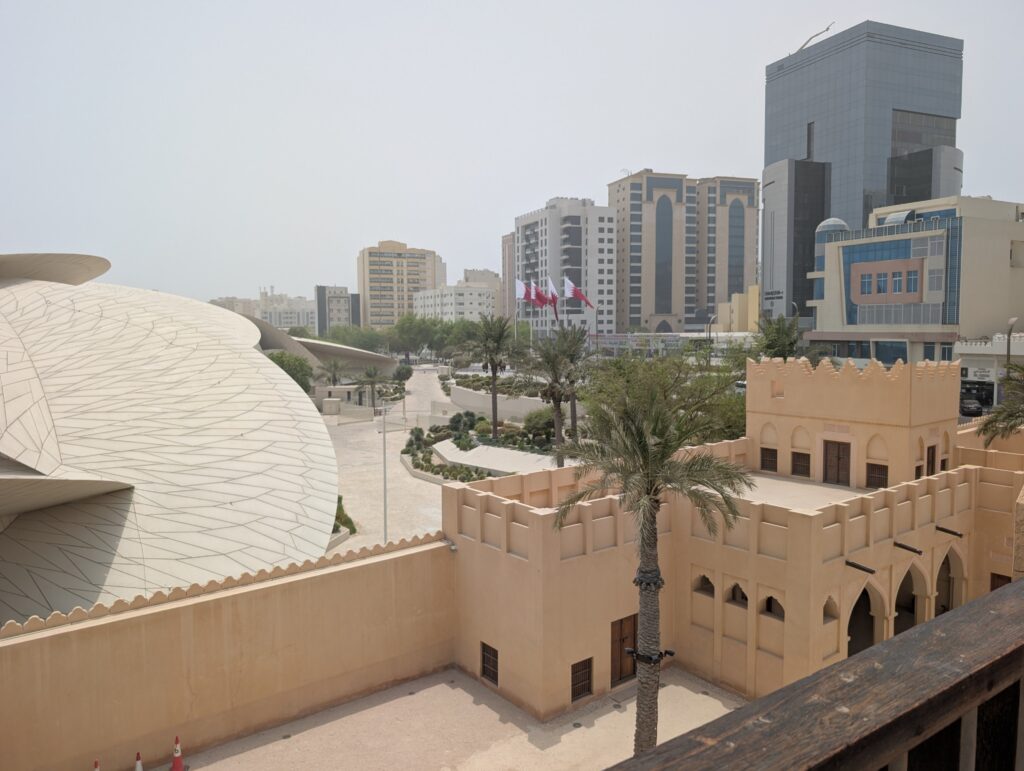
I decided next that I would walk to the Msheireb Museums. This was a geographic decision, strictly based on proximity and the order things were most easily visited on foot and via the public transportation. The Msheireb Museums are four houses in the downtown area that have been converted into thematic historic displays. One focuses on traditional home life in Qatar. Another focuses on slavery and exploited workers. A third concentrates on the discovery of oil in Qatar and the region, and a fourth emphasizes Doha’s transformation from a sleepy, traditional village to the modern, oil-fueled, modern metropolis it is today. I found the presentation to be most useful in the displays focusing on traditional Qatari houses and development. The oil discovery section is far surpassed in the nearby National Museum of Qatar. The slavery museum begins as most impressive, but then loses credibility as it stretches to make comparisons between the horrific conditions of slavery some two centuries ago and modern conditions for immigrant laborers in America and the United Kingdom. This seems especially ironic considering that Britain was a world leader in abolishing slavery in the early 19th century. America had a significant abolition movement in the early 19th century, and fought a war culminating in slavery’s permanent end in 1865. Qatar, on the other hand, did not get around to abolishing slavery until 1952. This strange anachronism did allow for the creation of several oral history accounts from people who had actually lived through this modern form of human chattel.
My evening culminated with a stroll through Souq Waqif (the main tourist market in Doha) to see if I could find a couple of items Stephanie had requested. I found a scarf-like garment she needed to complement a dress she had found in Chiang Mai. I looked for a jersey for Caleb, but did not find one. If I am going to buy a piece of clothing for myself, I like to pick something that distinctly reflects the country I am visiting. National team soccer jerseys often fit this bill. My dad finds this very strange, as I don’t follow soccer at all, but the jerseys are usually good quality shirts that bear the country name and national colors. I did pick up a Qatari jersey for myself.
After a supper at a storefront cafe, I took the metro back toward my hotel. I restocked my drink and snack supplies, then called it a night.


